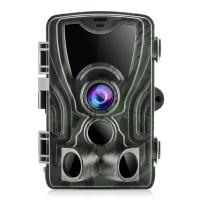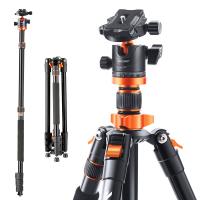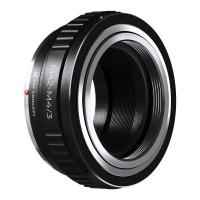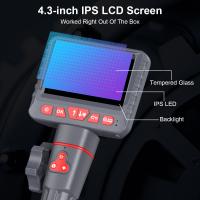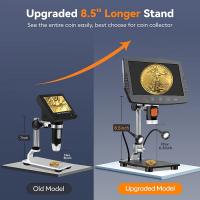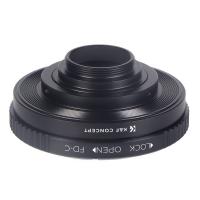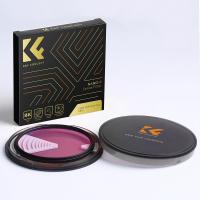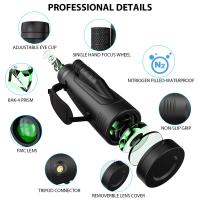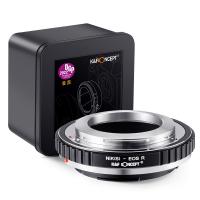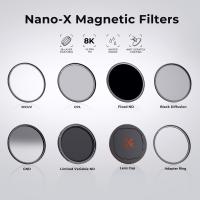Algae What Microscope To See ?
To observe algae, a light microscope is commonly used. Light microscopes use visible light to illuminate the sample and magnify the image. Algae can be observed using a compound microscope, which has multiple lenses to provide higher magnification. A compound microscope typically has a magnification range of 40x to 1000x, allowing for detailed examination of algae cells and structures. Additionally, phase contrast microscopy or differential interference contrast (DIC) microscopy can be employed to enhance the contrast and visibility of algae cells, especially for live samples. These techniques make it easier to observe the intricate features and movements of algae under the microscope.
1、 Light Microscopy: Observing algae with a standard light microscope.
Light Microscopy: Observing algae with a standard light microscope.
Algae are a diverse group of photosynthetic organisms that can be found in various aquatic environments, including freshwater and marine habitats. To observe algae under a microscope, a standard light microscope can be used. Light microscopy is a widely accessible and commonly used technique for studying microscopic organisms, including algae.
When using a light microscope to observe algae, it is important to prepare a suitable sample. This typically involves collecting a water sample containing algae and concentrating the organisms onto a microscope slide. Various techniques can be employed to concentrate the algae, such as filtration or centrifugation. Once the sample is prepared, it can be observed under a light microscope.
A standard light microscope allows for the visualization of algae at relatively low magnifications, typically up to 1000x. This is sufficient for observing the general morphology and cellular structures of most algae species. However, some algae may require higher magnifications to observe finer details. In such cases, specialized techniques like phase contrast or differential interference contrast microscopy can be employed to enhance the contrast and visibility of the algae.
It is worth noting that the resolution of a light microscope is limited by the wavelength of visible light, which restricts the level of detail that can be observed. To overcome this limitation, advanced microscopy techniques such as confocal microscopy or electron microscopy can be used. These techniques provide higher resolution and can reveal finer structural features of algae.
In recent years, there have been advancements in light microscopy techniques that have improved the visualization of algae. For example, fluorescence microscopy allows for the specific labeling of certain cellular components or molecules within algae, providing valuable insights into their function and behavior. Additionally, live-cell imaging techniques enable the observation of dynamic processes in real-time, allowing researchers to study the growth, movement, and interactions of algae.
In conclusion, a standard light microscope is a suitable tool for observing algae, providing valuable information about their morphology and cellular structures. However, for more detailed observations and advanced studies, specialized microscopy techniques may be necessary. The latest advancements in light microscopy have expanded our understanding of algae and continue to contribute to ongoing research in this field.

2、 Fluorescence Microscopy: Using fluorescent dyes to visualize specific algae components.
Fluorescence Microscopy: Using fluorescent dyes to visualize specific algae components.
Fluorescence microscopy is a powerful tool used to visualize specific components of algae. By using fluorescent dyes, researchers can selectively label and observe various structures and molecules within algae cells. This technique allows for detailed examination of cellular processes, such as photosynthesis, cell division, and nutrient uptake.
To visualize algae using fluorescence microscopy, specific dyes are used that bind to or interact with specific components of interest. For example, dyes like DAPI (4',6-diamidino-2-phenylindole) can bind to DNA, allowing researchers to observe the nucleus and chromosomal structures within algae cells. Other dyes, such as chlorophyll-specific dyes, can be used to visualize chloroplasts and monitor photosynthetic activity.
Fluorescence microscopy offers several advantages over traditional microscopy techniques. Firstly, it provides high-resolution images with excellent contrast, allowing for detailed examination of cellular structures. Additionally, fluorescence microscopy can be used to study dynamic processes in real-time, as some dyes can be used to track the movement of specific molecules within cells.
In recent years, advancements in fluorescence microscopy have further enhanced its capabilities for studying algae. Super-resolution microscopy techniques, such as stimulated emission depletion (STED) microscopy and structured illumination microscopy (SIM), have pushed the limits of resolution, allowing for the visualization of even smaller structures within algae cells. These techniques have provided new insights into the organization and function of cellular components in algae.
Furthermore, the development of genetically encoded fluorescent proteins, such as green fluorescent protein (GFP), has revolutionized the field of fluorescence microscopy. By genetically engineering algae to express these fluorescent proteins, researchers can label specific proteins or organelles and track their localization and dynamics within living cells.
In conclusion, fluorescence microscopy, with the use of fluorescent dyes and genetically encoded fluorescent proteins, is a valuable tool for visualizing specific components of algae. It allows for detailed examination of cellular structures and processes, providing insights into the biology and function of algae. With ongoing advancements in microscopy techniques, fluorescence microscopy continues to contribute to our understanding of algae and their role in various ecosystems.

3、 Electron Microscopy: Examining algae at high magnification using electron beams.
Electron Microscopy: Examining algae at high magnification using electron beams.
Electron microscopy is a powerful tool used to examine the intricate details of biological specimens, including algae. Algae are a diverse group of photosynthetic organisms that play a crucial role in aquatic ecosystems and have significant ecological and economic importance. To fully understand their structure and function, electron microscopy provides a level of detail that is not achievable with traditional light microscopy.
When studying algae using electron microscopy, a specific type of electron microscope called a transmission electron microscope (TEM) is used. TEMs use a beam of electrons instead of light to visualize the specimen. The electron beam passes through the algae sample, and the resulting image is captured on a fluorescent screen or photographic film.
The high magnification capabilities of TEM allow researchers to observe the ultrastructure of algae, including their cell walls, chloroplasts, and other organelles. This level of detail is crucial for understanding the cellular processes and adaptations of algae. For example, electron microscopy has revealed the intricate arrangement of thylakoid membranes within chloroplasts, which are responsible for photosynthesis in algae.
In recent years, advancements in electron microscopy techniques have further enhanced our understanding of algae. Cryo-electron microscopy (cryo-EM) is a technique that allows samples to be imaged at extremely low temperatures, preserving their native structure. This has enabled researchers to study dynamic processes in algae, such as the movement of flagella or the formation of lipid droplets.
Furthermore, the development of scanning electron microscopy (SEM) has provided a complementary approach to studying algae. SEM uses a focused beam of electrons to scan the surface of the specimen, producing a three-dimensional image. This technique has been particularly useful in studying the morphology and surface features of algae, such as the presence of scales or hairs.
In conclusion, electron microscopy, particularly transmission electron microscopy and scanning electron microscopy, is an invaluable tool for examining algae at high magnification. It allows researchers to explore the intricate details of algae's ultrastructure and provides insights into their cellular processes and adaptations. With advancements in electron microscopy techniques, our understanding of algae continues to expand, contributing to various fields such as ecology, biotechnology, and biofuel production.

4、 Confocal Microscopy: Creating detailed 3D images of algae using laser scanning.
Confocal Microscopy: Creating detailed 3D images of algae using laser scanning.
Confocal microscopy is a powerful tool for studying algae at a cellular level. This technique allows researchers to create detailed 3D images of algae using laser scanning. By using a confocal microscope, scientists can obtain high-resolution images of algae cells and their structures, providing valuable insights into their morphology and behavior.
The principle behind confocal microscopy is the use of a laser beam to scan the sample in a series of optical sections. These sections are then reconstructed to create a 3D image of the sample. This technique offers several advantages over traditional microscopy methods, such as improved resolution, reduced background noise, and the ability to visualize specific structures within the sample.
When it comes to studying algae, confocal microscopy has proven to be particularly useful. Algae are diverse organisms that play a crucial role in aquatic ecosystems and have numerous applications in various fields, including biotechnology and biofuel production. By using confocal microscopy, researchers can gain a better understanding of algae's cellular structure, growth patterns, and interactions with their environment.
Moreover, recent advancements in confocal microscopy have further enhanced its capabilities for studying algae. For example, the development of fluorescent probes and dyes allows researchers to label specific components within the algae cells, making them easier to visualize and study. Additionally, the integration of advanced imaging software enables the analysis of large datasets and the quantification of various cellular parameters.
In conclusion, confocal microscopy is an invaluable tool for studying algae. Its ability to create detailed 3D images of algae cells using laser scanning provides researchers with a deeper understanding of their structure and behavior. With ongoing advancements in technology, confocal microscopy continues to evolve, offering new possibilities for studying algae and unlocking their potential in various applications.






















